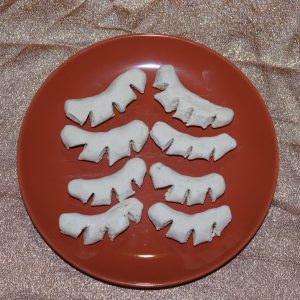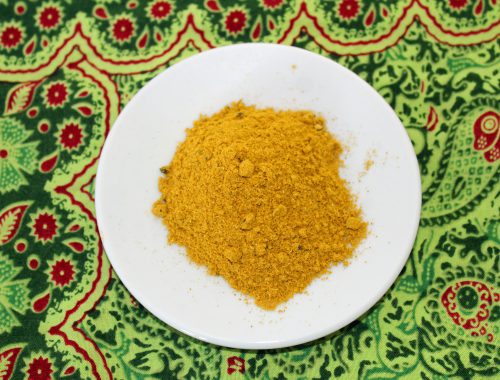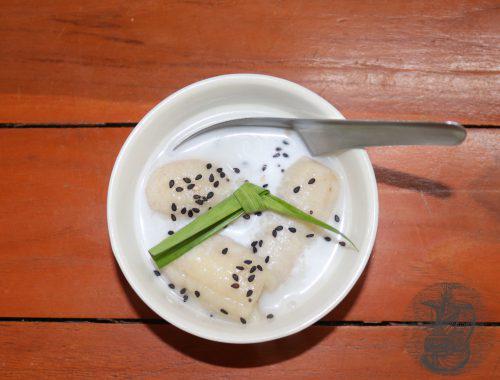
star anise and Anise
Anise and star anise are actually two very different spices and are not related to each other at all
But they taste and smell similar. What they have in common is the essential oil, anethole.
Anise
Anise is known all over the world, in Europe, it’s even better known than star anise. The small seeds, which are related to fennel, caraway, cumin and dill, are used in various sweets, candy or bread. In Switzerland, the so-called “Chräbeli” are very popular biscuits around Christmas. The name apparently comes from the word “claw”, because they look like animal paws with claws.
Anise seeds have a sweet and fresh taste which reminds me of liquorice.
They help the digestion of heavy dishes and in India, they are eaten, together with fennel and caraway seeds, at the end of a meal. Sometimes they are even glazed in coloured sugar.
In Holland, on the other hand, aniseed crumble is a popular topping for bread.
Star anise
Star anise is an evergreen tree from southern China and Vietnam. The fruits are harvested unripe and then dried. The aroma and colour develop only after drying. It owes its name to its shape – an eight-pointed star. Each branch of the star contains a shiny, reddish-brown seed. The aroma is not in the seeds, but in the skin, therefore the whole fruit is used as a spice. Usually, it is enough to cook a whole star with whatever you want to taste like it. Star anise is an integral part of the Chinese “five-spice” blend, along with Sechuan pepper, cassia cinnamon, fennel seeds and cloves. In Chinese cuisine, star anise is often used for pork and duck or to flavour coffee and tea. In Vietnam, it’s used for the traditional soup “phò”.
In Europe, it’s more commonly used in mulled wine or as a fragrant decoration. It plays an important role in Salzburg’s spice bouquets.
It also goes very well with jam, which can be eaten with cheese. Or you can make star anise syrup.
Like anise, star anise tastes a bit like liquorice.
Anethole
The essential oil found in both anise and star anise is used in sweets and various liqueurs. These liqueurs are called Pastis, Anisette, Ouzo or Raki, depending on the country.
These liqueurs are drunk in the respective countries as aperitif or digestive and often diluted with water or ice. At first, they are clear, but when they come into contact with water they become white and opaque.
Do you know why?
Since the liqueur contains a lot of anethole oil, when water has added an emulsion, which appears white, is produced.
So, here is the “Chräbeli”-Recipe

"Chräbeli"
Ingredients
- 2 eggs
- 1 pinch of salt
- 200 g sieved icing sugar
- 1 - 1½ tbsp whole aniseed
- 250 g flour
Instructions
- Beat eggs, salt and the sieved icing sugar until the mixture is light and frothy.

- Then add the flour and the anis seed and combine to a dough.
- Form finger-thick rolls from the dough and cut into pieces about 5 cm long. Bend the pieces slightly and cut them 2-3 times diagonally.

- Leave the biscuits to dry on a greased tray for about 20 hours. They will then have a light edge at the bottom. This is called "feet".

- Preheat the oven to 100°C, then bake the "Chräbeli" for about 20 minutes. Leave to cool on a grid.





2 Comments
Julie
I’m always on the lookout for new recipes to try, expecially from other countries.
I really wanted to try this one, but the recipe seems incomplete.
Could You tell me where the 1 – 1½ tbsp whole aniseed, goes?
I don’t see it in the recipe, maybe I missed it???
I’m not giving it a one star ? rating because it’s a bad recipe, I did so, because I couldn’t make it, yet…
I will fix my rating after I try it!
Thanks!
Sapori del Mondo
Hello, thank you for bringing this to my attention. Somehow the anise has been lost in translation. ? I have added it now.
I hope you like the cookies.
Daniela